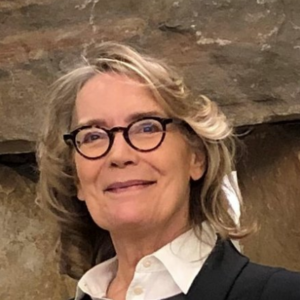Driverless Cars: Envisioning the City of the Future
Ellen Partridge, Senior Law Fellow at the Environmental Law & Policy Center, recaps our second autonomous vehicle roundtable event. Panelists focused on the land use and urban design implications of a driverless future.

ELPC has partnered with the Metropolitan Planning Council and the Shared Use Mobility Center to convene a series of three roundtables on autonomous vehicles. Our latest forum on January 30 brought the perspectives of architects, planners, and academics to the subject of how cities will be transformed by the new mobility. Over 90 transportation leaders, advocates, and public agency representatives came together to envision our future cities in the upcoming mobility revolution.
Featured speakers:
Kelley Coyner, Senior Fellow at the Center for Regional Analysis at George Mason University in Fairfax, Va. and founder of MobilityE3.
Marshall Brown, founder of Marshall Brown Projects architecture and urban design studio and Associate Professor at IIT College of Architecture in Chicago.
Christopher Hall, Urban Strategy Leader in the City Design Practice at Skidmore, Owings & Merrill, Chicago.
Mary Wisniewski, transportation reporter for the Chicago Tribune, moderated.
The theme that drives the three forums is: “What are the questions that need to be asked about autonomous vehicles?” We surely don’t know the answers yet, but we will not get any closer without asking the questions. Chris Hall noted: “To get to the promised land, we have to understand what it looks like.”
With no natural order to human transportation, there’s a lot of room for imagination here. This technological revolution is a once-in-a-century decision point. The shift to autonomous vehicles on our roadways will have the same impact as the move from horses to horseless carriages a century ago. The discussion raised some novel framing of questions:
- “How do we write the future? What kind of urban spaces do we want to live in, and work in, and how do we leverage the technology to get there?” as Marshall Brown put it. With a future that includes driverless cars, the challenge is not just to respond to the new technology – and the fear and uncertainty that come with it – but to envision how it can be an opportunity to address issues of equity, funding for transportation, and environmental restoration.
- What technology can we remove from the roadway when we add driverless cars to the mix? That might include stripping away signs, striping, stoplights, other traffic signaling apparatus, and the proliferation of roadside clutter.
- Is the route that the driverless car chooses the best route for the passenger or the best route that considers congestion and other unintended consequences that affect everybody? When we put more of our fate in the hands of technology, are we making a deal about how we want to weigh the overall efficiency of the city’s mobility?
- How do we create transparency about how the vehicles are designed to operate and how they are tested to ensure they conform to standards? With crashworthiness standards, test dummies can be tested to see how well the vehicle protects them in a crash. With crash avoidance technology, the tests are less straightforward. Kelley Coyner raised the issue that the current regulatory structure is designed to deal with the last hundred years of vehicle design, not the coming era when we need to assess how well the artificial intelligence and multiple sensors are working to keep us safe.
- What should cities and states do now to get the data that will help plan the physical infrastructure that shapes the vision for the city that includes driverless cars? Land use issues are massive and affect all of us. What we all want is a “short commute, maximum flexibility and nice places,” but how do we get there?
Declarations of what’s needed were noted. Asphalt took a beating from all the speakers, with grim agreement to “get rid of asphalt.” Public transit had a mixed reception. No one foretold the extinction of public transit, but evolution was clearly demanded. All agreed a sufficient investment in the transit system is essential to get the benefits envisioned, and that the idea of “public transit” must be expanded to include a variety of shared uses (shuttles, Uber and Lyft kinds of services) and mixes of public and private operators. Also, the congestion paradox – in which the new mobility promise of both the ability to fulfill previously unmet demand as well as a system that reduces demand – will have to be unraveled.
A key issue is how to turn 20th Century transportation infrastructure into 21stCentury human infrastructure. City streets that are less car-centric was a constant theme, with reflections on how the cobblestone streets of Marrakesh, the medieval streets of European cities and the streets of New Delhi share the commonality of having shared multimodal space that moves at “community speed.” Incorporating electric vehicle charging stations into changing infrastructure will boost adoption of electric vehicle technology and reduce air pollution. Parking space and how public space is used for the storage of vehicles will be part of the revolution.
New technologies will transform transportation, cities, and access to places where people live, work, play, learn, and dream. ELPC, MPC and SUMC will continue to further the conversation with the next roundtable on April 5, 2018, to discuss the readiness of our infrastructure for operating with and shaping this new technology.
You can watch the January 30 forum on CAN-TV, as well as the November 2 forum that addressed the public’s role in the mobility transformation.
An additional resource is an article in which Marshall Brown was interviewed for the New York Times Magazine, “Picturing the Self-Driving City” in The Tech & Design Issue: Life After Driving (Nov. 8, 2017).
